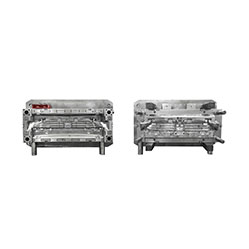Controling method of plastic injection mold temperature
Except for heat radiation and heat convection from the mold, most of the heat bring into the mold by the plastic needs to be taken out of the mold by the circulating heat transfer medium by heat conduction. Heat transfer media include water, oil and beryllium copper, etc, sometimes aluminum alloys are also used.
The mold temperature is generally controlled by adjusting the temperature of the heat transfer medium and adding heat insulation boards and heating rods.
Lower mold temperature is generally achieved by passing warm water (about 25°C) to cavity and "frozen water" (about 4°C) to core, when the gate of the heat transfer medium, that is the cooling water gate cannot pass through certain parts, materials with higher heat transfer efficiency (such as beryllium copper, etc.) should be used to transfer the heat to the heat transfer medium.
To increase the mold temperature, it is generally achieved by passing hot water and oil into the cooling water gate, when the mold temperature is high, we can use an electric heating rod to heat it, for molds that need to be heated, in order to prevent heat loss due to heat conduction, a resin insulation board should be added to the mold panel.

In the hot runner mold, the temperature of the runner plate is required to be high, and it must be heated by a heating rod. In order to avoid the heat of the runner plate from being transferred to the cavity, which causes difficulty in cooling the cavity, the contact surface with the cavity should be minimized during design and use heat insulation sheet to insulate.
In many cases, injection molds need to be cooled, and the main way of cooling is to process cooling water gates in the mold, the main forms of cooling water channels are: straight-through water gates, circular water gates, heat-conducting water gates, diaphragm water gatesls, spiral water gatess and jet water gates. most molds are cooled by straight-through water gate in actual design, when the plastic parts shape is special, they are mostly cooled by a combination of straight-through water gates and other cooling water gates.

Factors should be considered when designing a temperature control system:
1. The wall thickness, projected area and structural shape of the molded plastic part;
2. Production batch of plastic parts;
3. The property of molded plastics;
4. The size and structure of the mold, and the insert parts;
5. The gate type and hot runner layout.
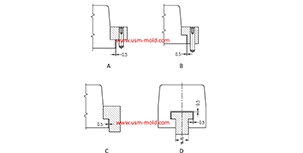
The T slot of slider and guider designing tips
Dec 18, 20231. The T slot of slot should be designed according to the picture 1, If there is a relatively high slider, the slider T slot is not high enough which will cause the center of gravity to be unstable,...view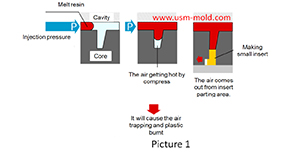
The main reasons for air trapping of plastic injecton mold
Mar 1, 2022During the injection molding process, the front end of the slight ribs may be air trapped and plastic burnt, and also cause the molded part may become black and carbonized. The mechanism of air...view
Venting system of plastic injection mold introduction
Feb 27, 2022Hello everyone, thanks for attention. We’ve discussed about the temperature control system earlier, now we are going to talk about the mold venting information in following 11 articles, from the...view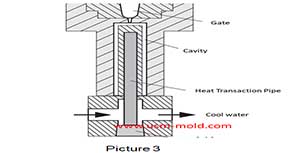
Plastic injection mold common cooling gate
Feb 17, 20221. Straight-through cooling water gate: the straight-through cooling gate is the most commonly used gate for plastic injection mold, and it is also the most convenient type of cooling for processing....view
Slider of side core pulling mechanisum assembling
Jul 21, 2022The picture 1 shows a typical guide pin driven slider parting and core-pulling mechanism, we will talk about the composition and function of the lateral core-pulling mechanism. 1. Lateral forming...view
Plastic injection mold runner system design
Jan 16, 2022The gate is the connecting part between the runner and the cavity, and is also the end part of the injection mold gating system, the molten plastic enters the cavity and core side through the gate...view
 English
English русский
русский

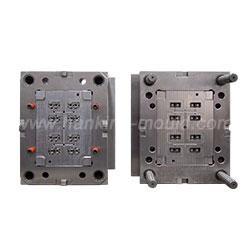
_20250311083139A052.webp)
